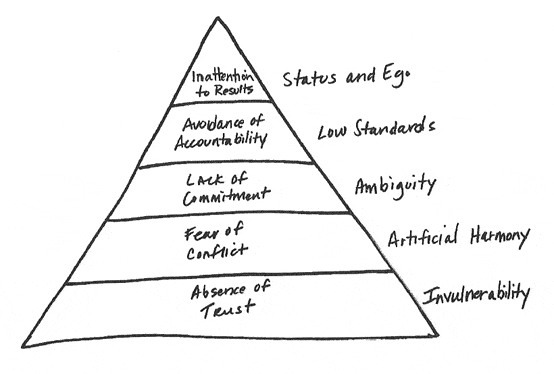
Women in Tech SEO February 2020
Hello, it’s your monthly Women in Tech SEO meetup writeup. This time, we met again at Zoopla HQ to hear talks from Polly Pospelova, Maret Reutelingsperger, and Petra Kis-Herczegh.
For anyone new here, Women in Tech SEO is a community that brings together a growing network of women to support each other’s development in the world of Technical SEO. You can join the group here or check out Areej’s beautiful website for more information, or keep up to date with the latest tech SEO news on the WITS Twitter.
Contents
- Polly Pospelova – Subdomains versus Subfolders and ccTLDs vs TLDs for SEO
- Maret Reutelingsperger – Why topic clusters will help you gain customers and search visibility
- Petra Kis-Herczegh – In-house SEO Success: Know the Past to Win the Future
Polly Pospelova – @polly_p
Subdomains vs Subfolders and ccTLDs vs. TLDs for SEO
[Tl;dr – Choosing subfolders over subdomains, and one single TLD with regional subfolders over ccTLDs provides the most SEO benefit, while also reducing costs.]
There are different ways to go about organising websites and it can be difficult to know which will be best until you’ve tried it. Or, unless someone like Polly comes along with experience and examples.
First we looked at using subfolders vs subdomains to structure a large site.
What is the difference between subfolder and subdomain?
Subfolders house certain content within the main domain, with related content sitting in the same directory.
Example root domain: www.example.com
Example subfolders: www.example.com/blog, www.example.com/jobs
The subfolder www.example.com/blog would house www.example.com/blog/post or www.example.com/blog/topic/post
A subdomain is further removed, created via a URL structure in which the subdomain name sits to the left of the root domain.
Commonly seen subdomains include: www.support.example.com, www.blog.example.com, www.jobs.example.com
Google largely states that either way of organising content is fine and website owners should use the best approach for their business and server set up. However, in Polly’s experience, “subfolders are almost always better for rankings”.
This is because search engines may consider content on subdomains differently, instead of associating all links, usage metrics and other ranking signals across the domain. When subdomains are migrated over to subfolders, these ranking signals become unequivocally attributed to the main domain. The consequence is that all backlinks, domain authority, and traffic point to one domain: www.example.com, with no confusion or division among the subdomains. This results in a more authoritative site that has more heft when trying to rank for competitive keywords.
Benefits of migrating sub-domains to subfolders
- A relatively simple process requiring only a reverse proxy. (Unlike a traditional migration, no painstaking redirect mapping is required.)
- Considerable boost to Domain Authority, Traffic and other user metrics due to consolidation of links, resulting in improved rankings.
Single TLD vs multiple ccTLDs?
TLD stands for Top Level Domain, the highest level of the Domain Naming System (DNS) hierarchy. E.g. www.example.com
ccTLDs are Country Code Top Level Domains, which are reserved for use in territories. www.example.ca would be a Canadian site.
What are the benefits of using ccTLDs?
Using a ccTLD sends strong signals to both users and search engines that the site belongs to a region, and so receives ranking priority for searches made in that region. Two hypothetical sites with identical ranking signals would, if one was .com and the other a ccTLD, would perform differently in the region of the ccTLD. An .de site would have the ranking advantage in Germany over an equal .com, the same for .fr in France etc.
What are the downsides of using ccTLDs?
The major problem caused by using ccTLDs for each region in which a business operates is that search engines view each one as a separate domain. Ranking factors are not consolidated across the international versions, resulting in you having to work harder to gain backlinks, traffic, and accrue other important ranking signals. Furthermore, each domain requires site maintenance in the form of hours spent to keep each technically in shape and well promoted. Lastly, every domain held requires fees to be kept registered, for security, plug-ins and partnerships.
In short, why use regional subfolders rather than ccTLDs?
- Stronger domain
- Greater domain authority
- Better rankings
- More budget
- Fewer hours on promotion
- Fewer hours on maintenance
Polly’s talk was accompanied by an impressive set of examples which can be found over at her recap at deleteagency.com.
Maret Reutelingsperger – @itsmaret
“Why topic clusters will help you gain customers and search visibility”
[Tl;dr – Rather than specific keywords, topic clusters should guide content strategy. The cluster approach encourages broad coverage that can be reached by users at all stages of the buyer journey.]
Consumers buy products differently now than five, ten, or fifteen years ago. What used to be a simple journey with limited contact points has become a huge hubbub, with consumers being reached by brands at far more frequent intervals with many instances being almost indiscernible. Maret’s talk centred on how to write in ‘topic clusters’ in order to reach potential customers at different stages along their buying journey, with a focus on providing the most helpful, desired content in a way that is natural and uses copywriting resource efficiently.
We’re all aware of the purchasing funnel of Awareness > Consideration > Decision.

Source: blog.hubspot.com/sales/what-is-the-buyers-journey
Previously, there were more defined ‘places’ a customer would go at each stage. ‘Awareness’ may have been a poster advert, ‘consideration’ may have been getting a brochure, and ‘decision’ involved going to the shop or placing an order over the phone. Nowadays the buyer’s journey is more of a web, with many touchpoints that aren’t accessed in a linear fashion. You could first see a product in person, search for it on mobile, be served an ad on social media, research other options on desktop, and finally purchase on mobile because your travel app says you have four minutes until the train comes. The internet is now the dominant, recurring ‘place’ of the buyer’s journey.
How does this relate to topic clusters?
The idea of topic clusters is to provide a handful of related content pieces that, in offering a broad response to one theme, cover the various touchpoints a potential customer may reach for on their purchase journey.
But how to create content using topic clustering?
The first step of any content creation is keyword research, first using common sense and awareness of your audience and then using tools to capture a wider sample of potential inroads to your site. Usually the process of assigning categories to your keyword list will produce the topics you should write around. This will involve consciously using keywords, but allows a method of structuring content creation so that perhaps four or five pages cover the whole area. In doing so, this answers a range of user queries that span the purchase journey.
An excellent way to tap into the right content topics is to speak directly to your customer service or Sales departments, if possible, or to have a system of reviewing data sources such as emailed support queries, questions made on social media, and your site’s internal search history.
Plan out internal links, check none are broken, and automate internal linking if possible.
Benefits of writing in clusters
- Greater coverage of a topic with fewer pages.
- Help search engines view your business as an authority in the field. Rather than having isolated pieces, structuring content creation methodically around topics will help you accumulate backlinks and consistent traffic from related sources related, affirming your brand’s place in that ecosystem.
- Clusters inspire consumer trust in your business, showing thoroughness and commitment. Repeatedly appearing for related searches or answering several of your customers’ questions makes your brand dependable.
For more detail on how to gain customers using content topic clusters, make sure to catch Maret’s talk at Brighton SEO! Here’s her session.
Petra Kis-Herczegh – @chameleon_jrnl
“In-house SEO Success: Know the Past to Win the Future”
[Tl;dr – Building relationships and getting cross-business buy-in is vital for the success of SEO work in 2020.]
One of the main challenges of SEO is integrating successfully with the wider business’ operations. Petra’s talk looked to deconstruct why this is such a challenge, firstly by breaking down the history of SEO. SEO is a complex specialty that relies on coordination across departments, however it is its rapid evolution into such an interconnected discipline that makes integration so challenging. As search engines have become more sophisticated and continue to release updates at an increasing pace, they’ve demanded higher quality websites, transforming SEO into more of a collaborative effort than ever before, in businesses that remain siloed.
Petra analysed a large number of companies, looking at factors like their strategy, people, processes, and technology. From here, she categorised them into Optimisers, Maintainers, and Learners.
86% of businesses are Maintainers and Learners. What does this mean?
Optimisers – Actually optimise and the business supports the SEO team’s work.
Maintainers – The business knows they need SEO and some work gets through.
Learners – A single SEO is still trying to explain to the business what SEO is.
Organic usually drives more than fifty percent of traffic yet SEO receives just 3% of marketing budget on average.
So, why the barriers to SEO?
Using The Five Dysfunctions of a Team, by Patrick Lenioni, we looked at some integration hurdles and solutions to overcome them. Each step builds on the previous steps.
- Trust – Can be broken down hugely by communication issues. Lenioni states that an absence of trust goes hand in hand with invulnerability; openness and honesty breed stronger relationships and better trust.
- Conflict – Is there open disagreement and debate? Are you or departments actively listening to each other, hearing why something is done in a certain way, what issues are important on the other side? The focus needs to be on useful conflict that strengthens understanding and moves you towards viable solutions.
- Commitment – Gaining commitment from other teams is a process. Are they checking in with SEO to improve the business’ SEO, or is it covering backs or ticking boxes?
- Accountability – Are standards high collectively, do you hold each other to account?
- Results – accepting a part in the team’s results and being able to view results critically.
A combination of the newness of modern SEO and the extent it relies on collaboration mean that these hurdles can sometimes seem very high. Luckily, steady effort towards education and integration can create a lot of progress.
Five skills for integrating SEO
- Relationship building
- Active listening – show you’re listening, demonstrate you understand what they’ve said.
- Proactive engagement – pursue their buy-in rather than wait for it.
- Real input – Once you have other teams’ buy-in, encourage and accept their input.
- Understanding – Buy-in, input, feedback and shared purpose all rely on understanding, which feeds into accountability.

Source: www.gettingsmart.com (https://bit.ly/31ItQi0)
This talk provided plenty of food for thought, as many SEOs cite red-tape as a major challenge to performance. Be sure to see Petra deliver this fantastic presentation in its unabridged glory at April’s Brighton SEO! Session details here.
A huge thank you to Areej for her dedication to growing Women in Tech SEO and to the three wonderful speakers. I highly recommend any women working in or around SEO to get involved – there’s no meetup in March due to Areej’s sold out (!) Women in Tech SEO Conference taking place on the 6th, however, insights, experiences, and support are shared daily on the WITS Slack channel (please note – it is a community for women. For alternatives try Online Geniuses or Big SEO (Reddit, Slack)).
For more Technical SEO News, check out our Women in Tech SEO recaps from December and January, read our take on January’s featured snippet update, or browse Paige’s ever-popular SERP features glossary!





